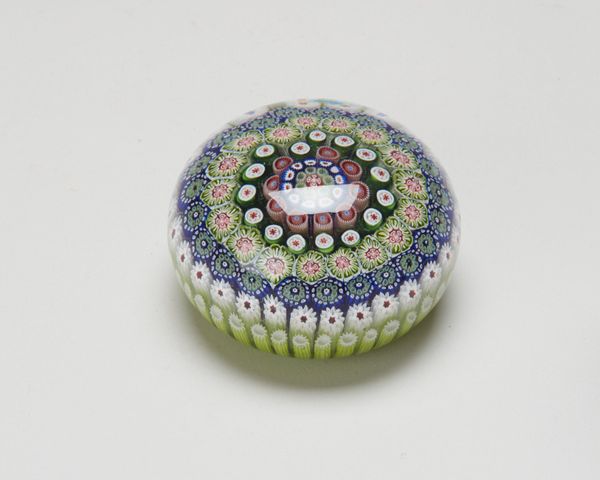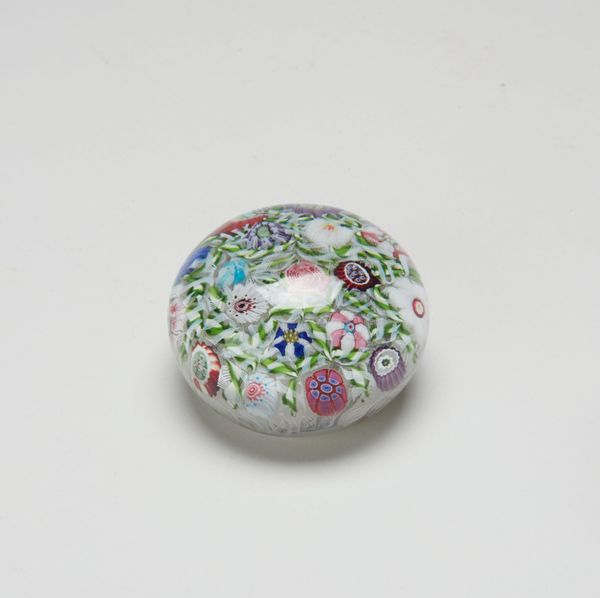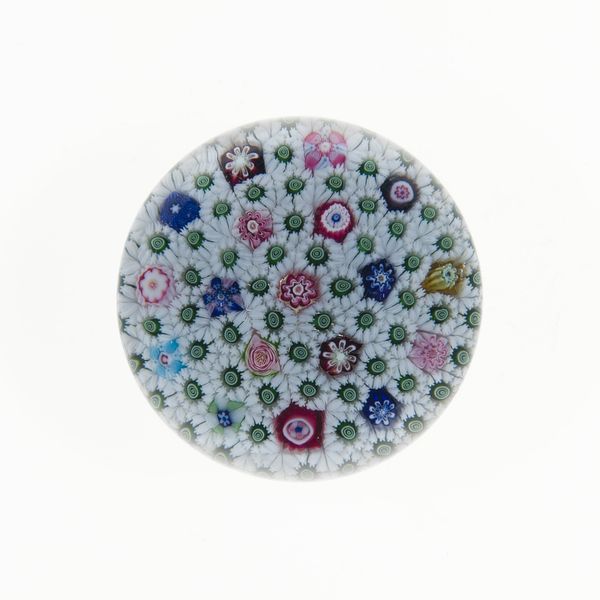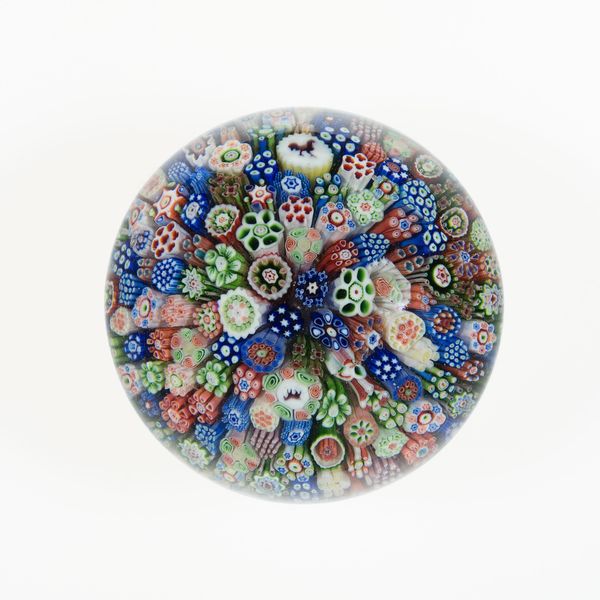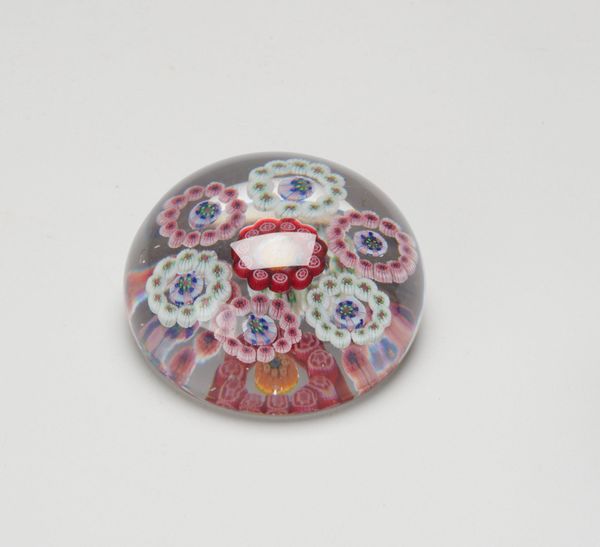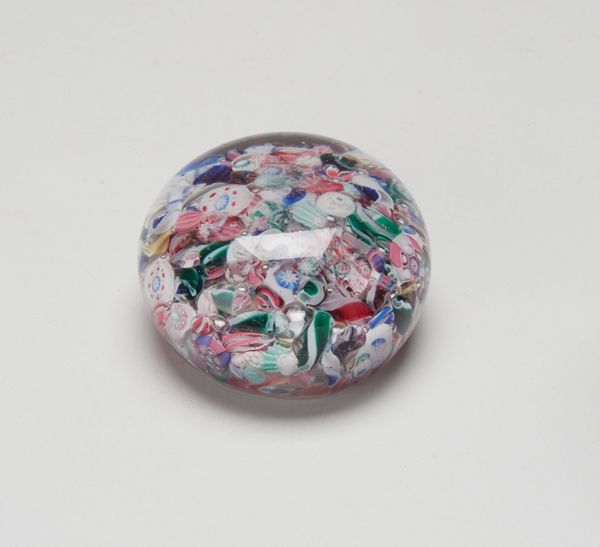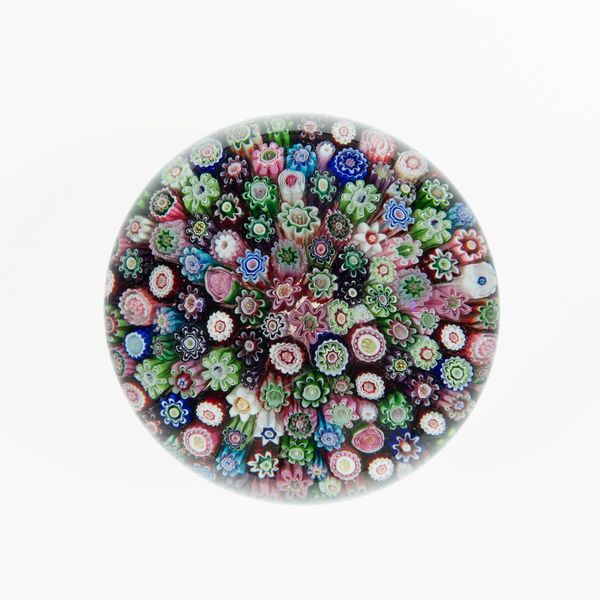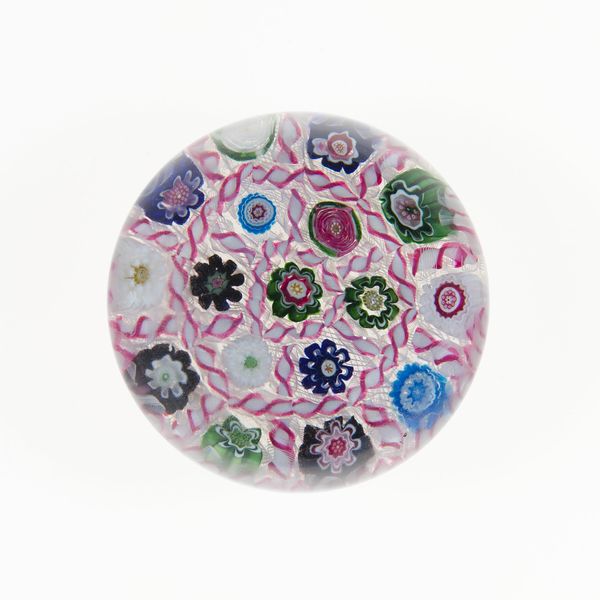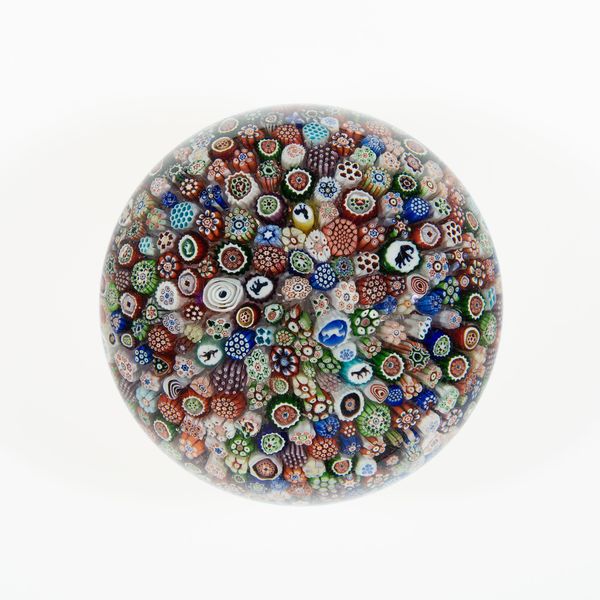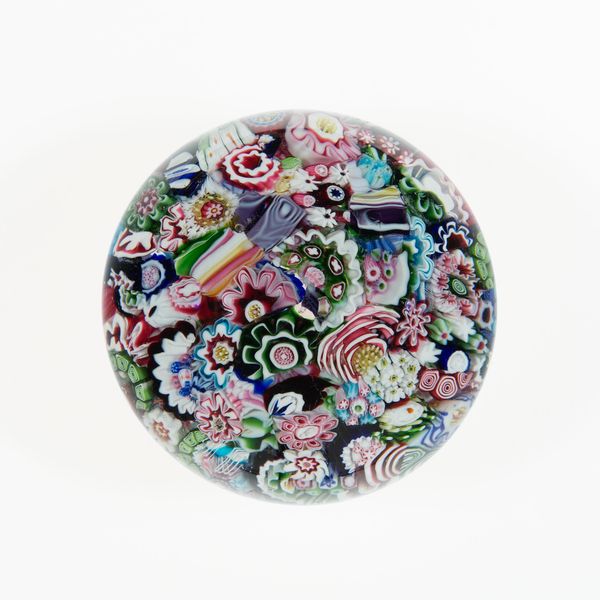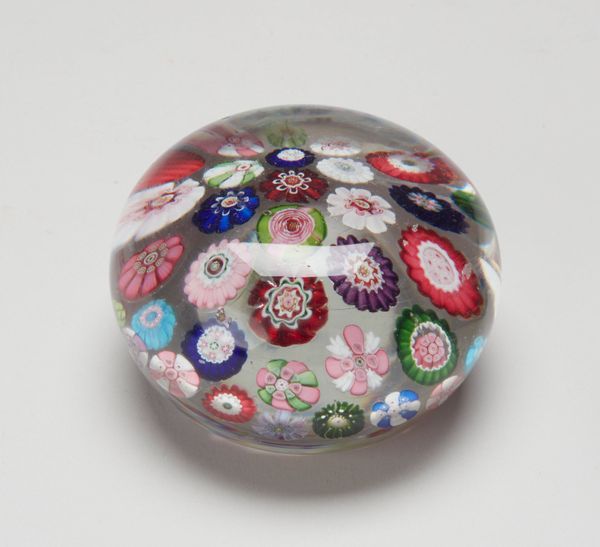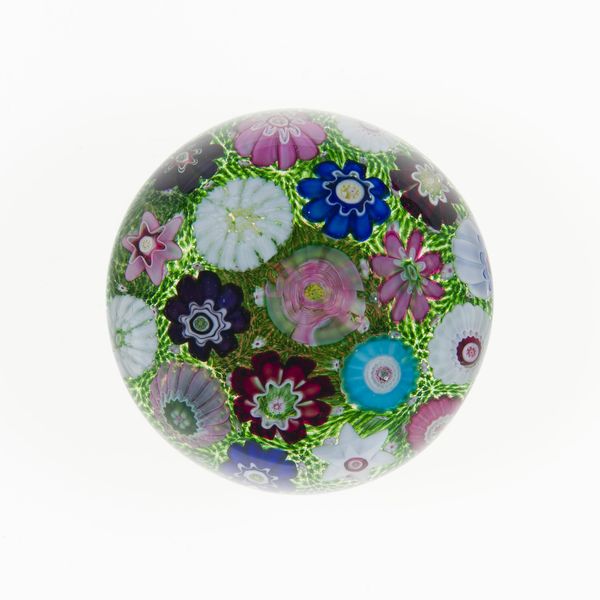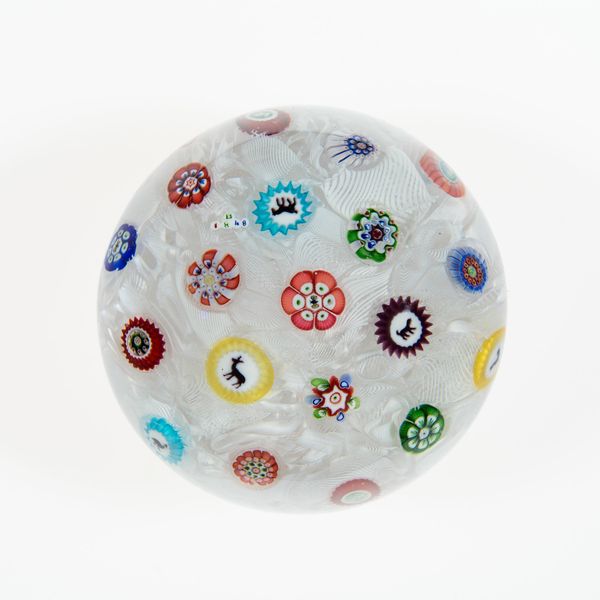
glass
#
glass
Dimensions: 2 x 3 1/8 x 3 1/8 in. (5.08 x 7.94 x 7.94 cm)
Copyright: No Known Copyright
Curator: What immediately strikes me about this glass paperweight, created by Paul Ysart between approximately 1900 and 1950, is its sheer density. A kaleidoscopic concentration of detail. Editor: I feel almost overwhelmed by its maximalism. It's beautiful, like capturing a moment of pure, unadulterated joy—or perhaps, an idealized microcosm of springtime? Curator: Indeed. Consider how Ysart manages to corral the chaotic potential of multicolored millefiori into a singular, contained form. The sphere acts as a frame, dictating the distribution and relationship of these tiny glass flowers. Editor: So you’re viewing this less as natural, organic joy and more as a manufactured idea of it. Is that right? The symbol of beauty, refined? Curator: I wouldn't necessarily call it *manufactured,* but curated is apt. There’s intent behind the gradient, the repetition. Look how he's used the varied textures and hues to guide the eye toward the focal point—the top center of the sphere. Editor: True, it feels like he’s bottling a cultural idea. Paperweights traditionally symbolize order, keeping papers from disarray, like containing thoughts or ideas. Does it mean that memory can be neatly contained and clearly viewed? Curator: I see your point. The weightiness of the glass lends the work a literal and symbolic groundedness. Furthermore, this seemingly self-contained system, hermetically sealed, asks how art might allow us to suspend time and memory within tangible forms. Editor: Right. The dome acts as a kind of magnifying lens to look closely at the world around us. To dwell within the confines of a miniature paradise. Thank you, that was a window into new perspective. Curator: My pleasure. A formal inspection allows one to reflect how external factors might shape and refine raw emotion into potent expression.
Comments
No comments
Be the first to comment and join the conversation on the ultimate creative platform.
